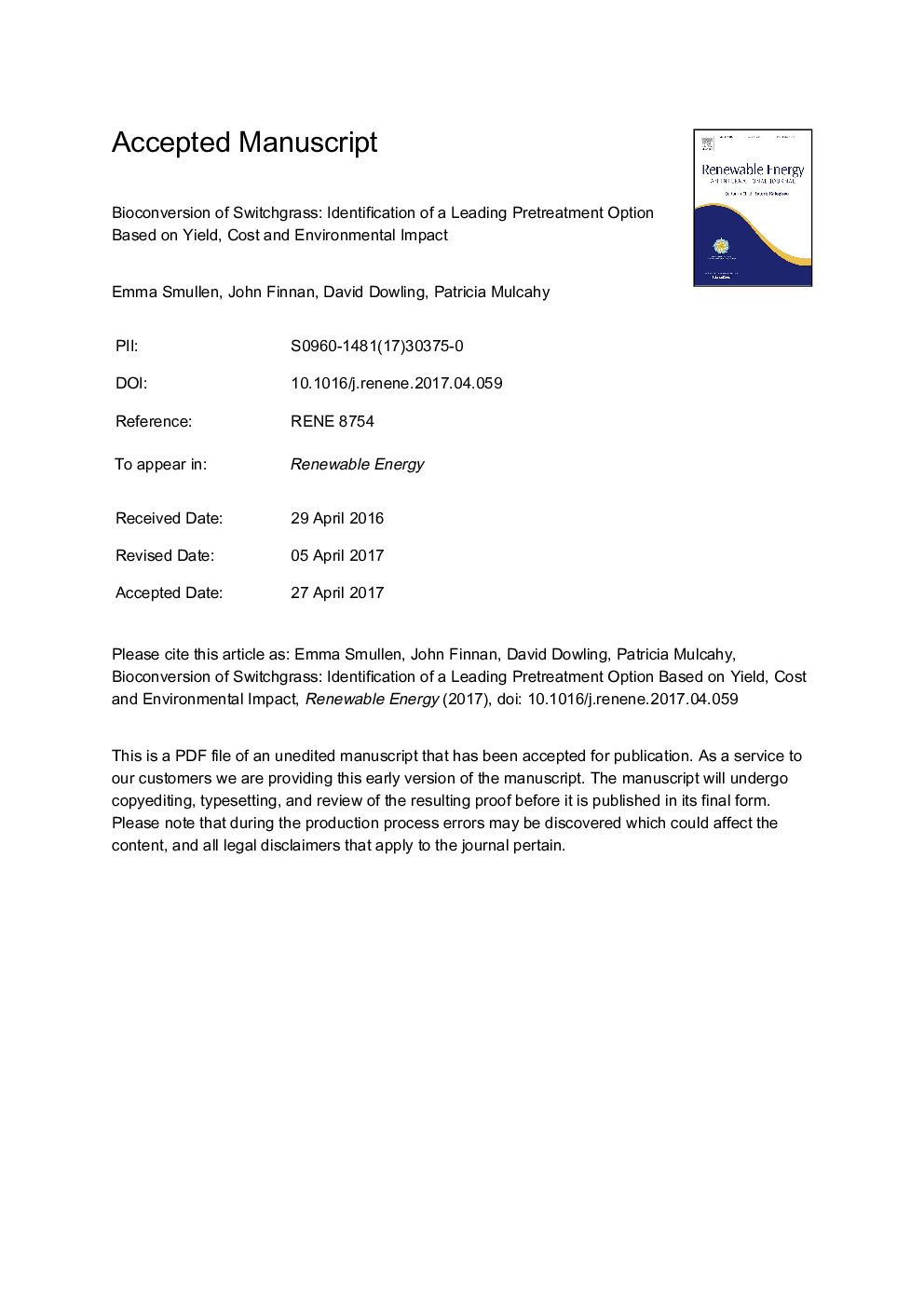| Article ID | Journal | Published Year | Pages | File Type |
|---|---|---|---|---|
| 4926337 | Renewable Energy | 2017 | 29 Pages |
Abstract
Glucose and ethanol yields showed that methanol was the most effective pretreatment chemical at 1 mol Lâ1, producing 230 g of glucose and 340 cm3 of ethanol kgâ1 of feedstock with a 97% conversion rate. Pretreatment employing sodium hydroxide was found to be the least effective, with cellulose to glucose conversion rates of 38% and 62% following simultaneous saccharification and fermentation (SSF). In general, SSF significantly increased cellulose conversion rates, up to 32% for some samples. At 0.55 ⬠kgâ1 glucose and 0.50 ⬠Lâ1 ethanol methanol was also found to be the most cost effective pretreatment technique compared to sodium hydroxide at 1.96 ⬠kgâ1 glucose and 7.94 ⬠Lâ1 ethanol.
Keywords
Related Topics
Physical Sciences and Engineering
Energy
Renewable Energy, Sustainability and the Environment
Authors
Emma Smullen, John Finnan, David Dowling, Patricia Mulcahy,
